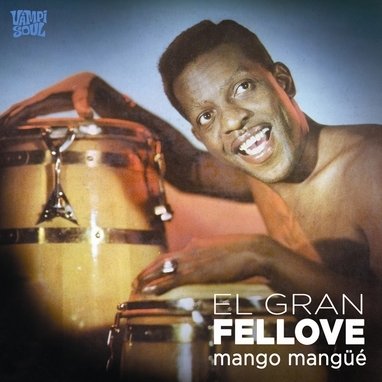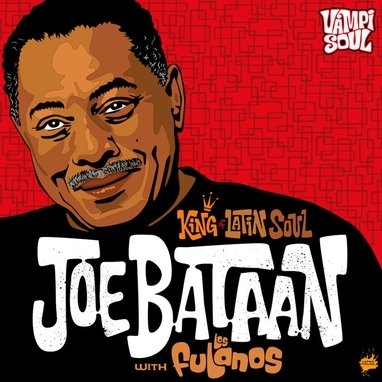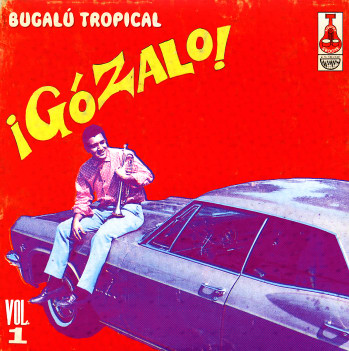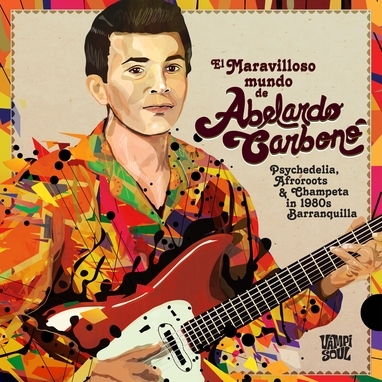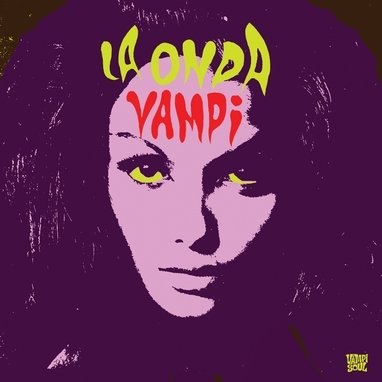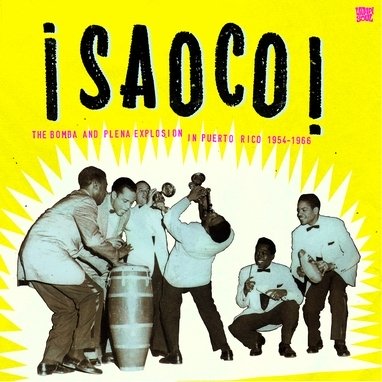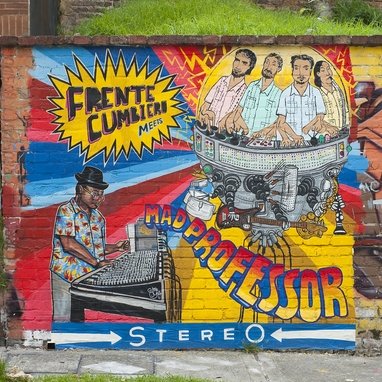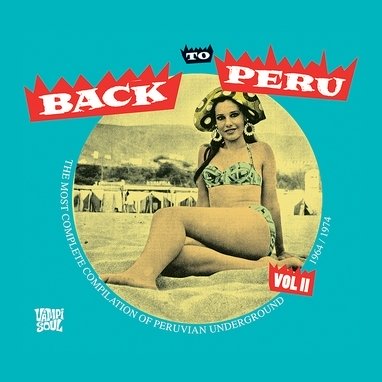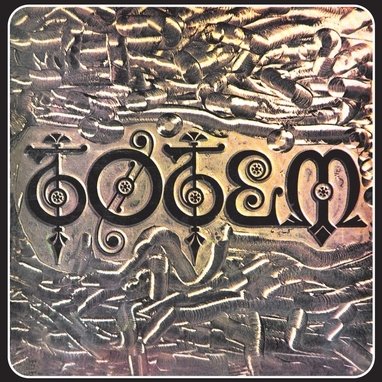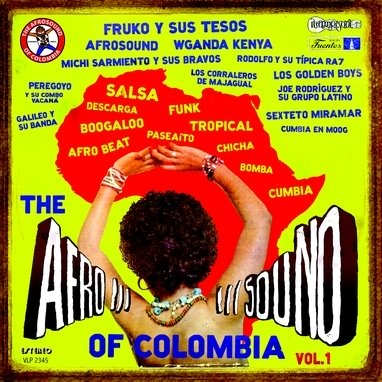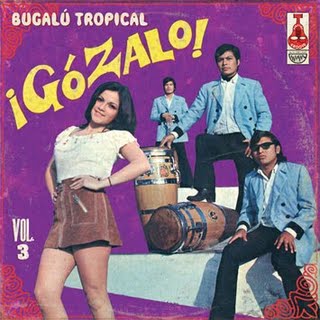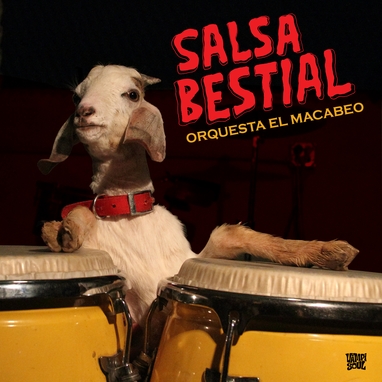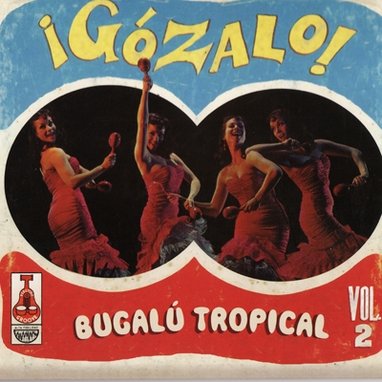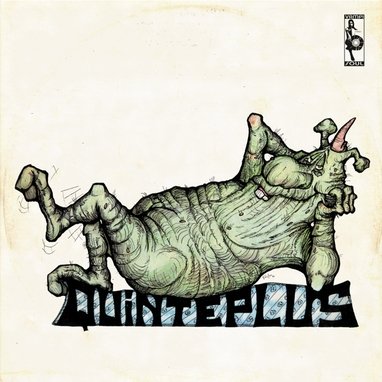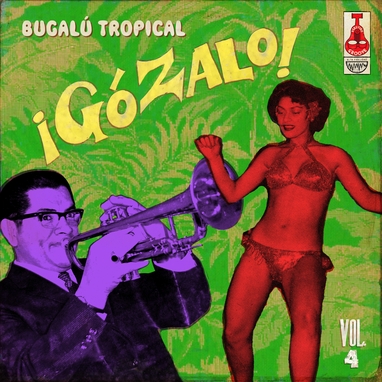WE ALL TOGETHER
WE ALL TOGETHER
WE ALL TOGETHER
WE ALL TOGETHER
After remaining unavailable for years, here’s the long-awaited vinyl reissue of the debut album (originally released in 1972) by one of the epoch-making groups in the history of Peruvian rock: We All Together.
Their original compositions —all sung in English— betray their passion for McCartney, taking Beatle-centrism to new heights in South America. While the Uruguayan Los Shakers could remind us of the first phase of the Fab 4, We All Together is like their ‘70s version.
Amazing compositions, with nods to prog rock and the twilight imprint of singer-songwriters living the end of the hippy dream, that show both diversity and a defined identity. A must for any ‘70s rock collector.
Between 1967 and 1974 Saúl and Manuel Cornejo led a series of epoch-making groups on the MAG label (New Juggler Sound, Laghonia and We All Together) in the history of Peruvian rock. All these bands were directly influenced by the British invasion and used new sounds from Hammond, phase shifters, synthesizers and tapes played backwards, which stimulated rivalry with other groups. Another hallmark of the brothers was the technical quality of their records, thanks to Saul’s supervision of all MAG recordings between 1972 and 1974.
At the end of 1971, when Laghonia was working on the last tracks of “Etcétera”, they met Manuel Antonio Guerrero’s (MAG) son, Carlos, who had just got back from the USA, and gladly joined in the choruses of the last songs Laghonia was recording. They met up again soon after to rehearse some of Paul McCartney’s songs. As soon as he heard them play, Guerrero Senior urged them to form a group focused on cover versions of foreign hits not yet known in Peru. Initially, the Cornejo brothers weren’t enthused by a project so different from Laghonia, but ended up accepting as it gave them the opportunity to spend time in the studio. Carlos’ melodic voice was another incentive, although they made it clear that the new group, We All Together (WAT), would stick to the mixing desk: “The group isn’t into presentations or shows, we’re about recording music and purifying it to the max,” stated Saúl at that time.
Their first album included four covers of Paul McCartney and Badfinger, several compositions by Carlos Guerrero —appealing Beatles-style melodies— and two songs from Saúl and Manuel’s archives. ‘Children’, by keyboardist Carlos Salom, opens the LP: a nostalgic description of childhood, with the distinctive piano sound (achieved through mixing) that permeates the record. Although WAT sang and composed in English, they had no intention of undermining or alienating national culture. Their aim was much more innocent: they simply wanted to make it in the English-speaking world.
‘It’s a Sin to Go Away’ was composed during Laghonía’s lifetime as a band and it features guitars played backwards and a psychedelic-progressive style closely attuned to the era. After being included on several compilations, praise for the song has flowed from Europe and the United States in recent years.
The album was released in July 1972 and became one of the best-selling Peruvian rock LPs.
Productos relacionados
21,00€
After remaining unavailable for years, here’s the long-awaited vinyl reissue of the debut album (originally released in 1972) by one of the epoch-making groups in the history of Peruvian rock: We All Together.
Their original compositions —all sung in English— betray their passion for McCartney, taking Beatle-centrism to new heights in South America. While the Uruguayan Los Shakers could remind us of the first phase of the Fab 4, We All Together is like their ‘70s version.
Amazing compositions, with nods to prog rock and the twilight imprint of singer-songwriters living the end of the hippy dream, that show both diversity and a defined identity. A must for any ‘70s rock collector.
Between 1967 and 1974 Saúl and Manuel Cornejo led a series of epoch-making groups on the MAG label (New Juggler Sound, Laghonia and We All Together) in the history of Peruvian rock. All these bands were directly influenced by the British invasion and used new sounds from Hammond, phase shifters, synthesizers and tapes played backwards, which stimulated rivalry with other groups. Another hallmark of the brothers was the technical quality of their records, thanks to Saul’s supervision of all MAG recordings between 1972 and 1974.
At the end of 1971, when Laghonia was working on the last tracks of “Etcétera”, they met Manuel Antonio Guerrero’s (MAG) son, Carlos, who had just got back from the USA, and gladly joined in the choruses of the last songs Laghonia was recording. They met up again soon after to rehearse some of Paul McCartney’s songs. As soon as he heard them play, Guerrero Senior urged them to form a group focused on cover versions of foreign hits not yet known in Peru. Initially, the Cornejo brothers weren’t enthused by a project so different from Laghonia, but ended up accepting as it gave them the opportunity to spend time in the studio. Carlos’ melodic voice was another incentive, although they made it clear that the new group, We All Together (WAT), would stick to the mixing desk: “The group isn’t into presentations or shows, we’re about recording music and purifying it to the max,” stated Saúl at that time.
Their first album included four covers of Paul McCartney and Badfinger, several compositions by Carlos Guerrero —appealing Beatles-style melodies— and two songs from Saúl and Manuel’s archives. ‘Children’, by keyboardist Carlos Salom, opens the LP: a nostalgic description of childhood, with the distinctive piano sound (achieved through mixing) that permeates the record. Although WAT sang and composed in English, they had no intention of undermining or alienating national culture. Their aim was much more innocent: they simply wanted to make it in the English-speaking world.
‘It’s a Sin to Go Away’ was composed during Laghonía’s lifetime as a band and it features guitars played backwards and a psychedelic-progressive style closely attuned to the era. After being included on several compilations, praise for the song has flowed from Europe and the United States in recent years.
The album was released in July 1972 and became one of the best-selling Peruvian rock LPs.
Productos relacionados
WE ALL TOGETHER
After remaining unavailable for years, here’s the long-awaited vinyl reissue of the debut album (originally released in 1972) by one of the epoch-making groups in the history of Peruvian rock: We All Together.
Their original compositions —all sung in English— betray their passion for McCartney, taking Beatle-centrism to new heights in South America. While the Uruguayan Los Shakers could remind us of the first phase of the Fab 4, We All Together is like their ‘70s version.
Amazing compositions, with nods to prog rock and the twilight imprint of singer-songwriters living the end of the hippy dream, that show both diversity and a defined identity. A must for any ‘70s rock collector.
Between 1967 and 1974 Saúl and Manuel Cornejo led a series of epoch-making groups on the MAG label (New Juggler Sound, Laghonia and We All Together) in the history of Peruvian rock. All these bands were directly influenced by the British invasion and used new sounds from Hammond, phase shifters, synthesizers and tapes played backwards, which stimulated rivalry with other groups. Another hallmark of the brothers was the technical quality of their records, thanks to Saul’s supervision of all MAG recordings between 1972 and 1974.
At the end of 1971, when Laghonia was working on the last tracks of “Etcétera”, they met Manuel Antonio Guerrero’s (MAG) son, Carlos, who had just got back from the USA, and gladly joined in the choruses of the last songs Laghonia was recording. They met up again soon after to rehearse some of Paul McCartney’s songs. As soon as he heard them play, Guerrero Senior urged them to form a group focused on cover versions of foreign hits not yet known in Peru. Initially, the Cornejo brothers weren’t enthused by a project so different from Laghonia, but ended up accepting as it gave them the opportunity to spend time in the studio. Carlos’ melodic voice was another incentive, although they made it clear that the new group, We All Together (WAT), would stick to the mixing desk: “The group isn’t into presentations or shows, we’re about recording music and purifying it to the max,” stated Saúl at that time.
Their first album included four covers of Paul McCartney and Badfinger, several compositions by Carlos Guerrero —appealing Beatles-style melodies— and two songs from Saúl and Manuel’s archives. ‘Children’, by keyboardist Carlos Salom, opens the LP: a nostalgic description of childhood, with the distinctive piano sound (achieved through mixing) that permeates the record. Although WAT sang and composed in English, they had no intention of undermining or alienating national culture. Their aim was much more innocent: they simply wanted to make it in the English-speaking world.
‘It’s a Sin to Go Away’ was composed during Laghonía’s lifetime as a band and it features guitars played backwards and a psychedelic-progressive style closely attuned to the era. After being included on several compilations, praise for the song has flowed from Europe and the United States in recent years.
The album was released in July 1972 and became one of the best-selling Peruvian rock LPs.
WE ALL TOGETHER
WE ALL TOGETHER
After remaining unavailable for years, here’s the long-awaited vinyl reissue of the debut album (originally released in 1972) by one of the epoch-making groups in the history of Peruvian rock: We All Together.
Their original compositions —all sung in English— betray their passion for McCartney, taking Beatle-centrism to new heights in South America. While the Uruguayan Los Shakers could remind us of the first phase of the Fab 4, We All Together is like their ‘70s version.
Amazing compositions, with nods to prog rock and the twilight imprint of singer-songwriters living the end of the hippy dream, that show both diversity and a defined identity. A must for any ‘70s rock collector.
Between 1967 and 1974 Saúl and Manuel Cornejo led a series of epoch-making groups on the MAG label (New Juggler Sound, Laghonia and We All Together) in the history of Peruvian rock. All these bands were directly influenced by the British invasion and used new sounds from Hammond, phase shifters, synthesizers and tapes played backwards, which stimulated rivalry with other groups. Another hallmark of the brothers was the technical quality of their records, thanks to Saul’s supervision of all MAG recordings between 1972 and 1974.
At the end of 1971, when Laghonia was working on the last tracks of “Etcétera”, they met Manuel Antonio Guerrero’s (MAG) son, Carlos, who had just got back from the USA, and gladly joined in the choruses of the last songs Laghonia was recording. They met up again soon after to rehearse some of Paul McCartney’s songs. As soon as he heard them play, Guerrero Senior urged them to form a group focused on cover versions of foreign hits not yet known in Peru. Initially, the Cornejo brothers weren’t enthused by a project so different from Laghonia, but ended up accepting as it gave them the opportunity to spend time in the studio. Carlos’ melodic voice was another incentive, although they made it clear that the new group, We All Together (WAT), would stick to the mixing desk: “The group isn’t into presentations or shows, we’re about recording music and purifying it to the max,” stated Saúl at that time.
Their first album included four covers of Paul McCartney and Badfinger, several compositions by Carlos Guerrero —appealing Beatles-style melodies— and two songs from Saúl and Manuel’s archives. ‘Children’, by keyboardist Carlos Salom, opens the LP: a nostalgic description of childhood, with the distinctive piano sound (achieved through mixing) that permeates the record. Although WAT sang and composed in English, they had no intention of undermining or alienating national culture. Their aim was much more innocent: they simply wanted to make it in the English-speaking world.
‘It’s a Sin to Go Away’ was composed during Laghonía’s lifetime as a band and it features guitars played backwards and a psychedelic-progressive style closely attuned to the era. After being included on several compilations, praise for the song has flowed from Europe and the United States in recent years.
The album was released in July 1972 and became one of the best-selling Peruvian rock LPs.


